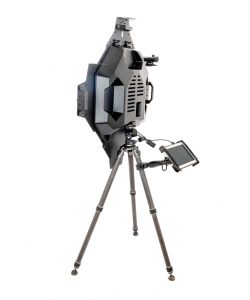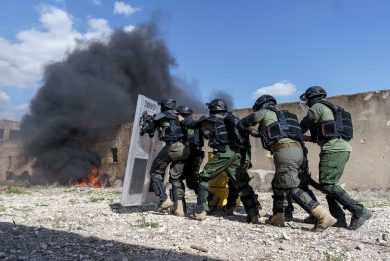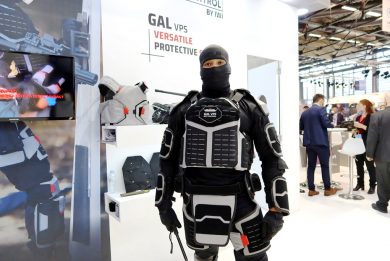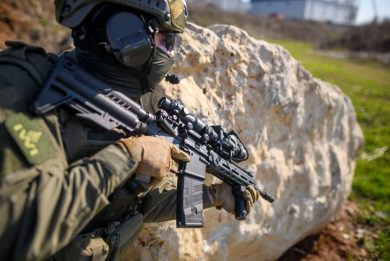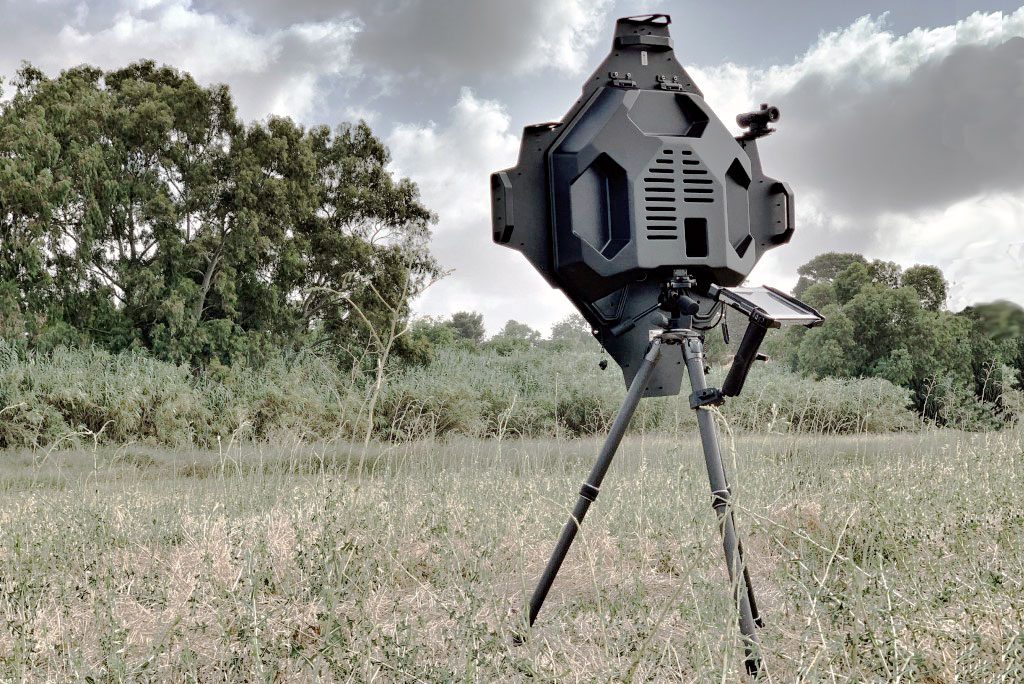
Understanding situation inside buildings at distance thanks to Camero’s XLR80
By Paolo Valpolini
With its Xaver-800, -400 and –100 in use in 50 countries, the contract with the 50th nation was bagged very recently, Camero is definitely a key player in the sense-through-the-wall field, most of its customers being military special forces and law enforcement agencies special units, albeit their systems are in use also by some search and rescue units.
The above mentioned systems, based on ultra wide band (UWB) technology, provide wide-angle coverage, the antenna being positioned against the wall, the sensors providing, depending on the type, 1-D to 3-D information, going from the 660 grams of the range-only Xaver-100, to the 3.2 kg of the Xaver-400, up to the 14.5 kg of the Xaver-800, capable to provide full 3-D view as well as to map the internal layout of the building. All three systems are able to detect not only moving people but also static ones, sensing sub-motion movements such as breathing and heartbeat.
“Today we are introducing our last product, the Xaver LR80, XLR80 in short,” Amir Beeri, the founder and CEO of the company, which since 2011 is part of the SK Group, said. LR of course means Long Range, however that range is not meant to look deeper in a building, but rather to be able to understand what happens in the building staying at distance.
“Here we use a very narrow beam aimed at targets a distance, over 100 meters, allowing us to understand what happens inside that building,” Camero’s CEO explains, underlining that the XLR80 is not an imaging device, what the operator can see on the screen providing him full situational awareness of the situation inside the target.
The XLR80 comes as a flat square antenna mounted diagonally on a tripod, which dimensions according to our estimates should be of around 65×65 cm, weighing less than 20 kg, with an electronic module at the back, covered by a protective hood when in transport mode, a ruggedised tablet computer fixed to one of the tripod legs being used to control the system and to observe the data provided by the system. These data allow the operator to get the answer to five possible questions: is the targeted building or room empty or not? If not, how many people are inside? What is their exact distance from the XLR80? Assuming that the exact distance of the outer wall from the sensor is known, it is easy to know how deep the subjects are in the room or building. Are they moving or not? And if yes, in which direction?
After approaching the target in a stealthy manner the operator rigs up the XLR80, and using a x4 optical sight having the same field of view of the XLR80, provided by sister company Meprolight also part of the SK Group, it precisely aims beam towards the building or the area of interest within the building. moving the antenna thanks to the three carrying handles available in the upper part. He then switches on the system, which operates in the 3-5 GHz band (a narrower band compared to former Xavers which frequency range is 3-10 GHz), its transmitting power being under 1 mW (the same of current Xavers), the XLR being at least an order of magnitude within the limits of the most stringent regulations, according to Camero. Range accuracy and resolution are considerable, respectively 32 cm and 10 cm, which means it is possible to precisely locate where a person is, and to discriminate between two adjacent persons, the system also warning of the presence of static people, as the other Xaver products do.
The man-machine interface is based on the tablet screen; a diagram with the X-axis representing time and the Y-axis representing distance is proposed to the user, the signal going from right to left. The energy level of the signal is given by a colour code, from dark blue through green to yellow, and when a living person falls within the field of view a yellow line appears on the right and starts moving towards the left as time pass by. If the person is still, a straight line will appear as the Y data, that is distance, will not change, the yellow line going down if the person comes towards the sensor and up if the distance increases. Date and time are available top right, while top-left an icon shows a man walking and a second one a man lying on a bed, high sensitivity mode being used in the second case when still person have to be found. The MMI is pretty simple, and a few hours training is sufficient according to Camero. The XLR80 is fitted with an integral data recording system, which allows post-mission analysis but can also be used for debriefing as well as for training purposes. The overall recording time is of 12 hours, the two rechargeable batteries ensuring continuous operations for 7 hours, however the XLR80 can be linked to an external power source, if available.
Asked about the differences in the technologies used compared to previous Xavers Amir Beeri told EDR On-Line that “We kept the same sensor, which is common to all our systems, the antenna being obviously different in order to concentrate the beam at distance. Concentrating the beam was however not enough to compensate the much longer distance, hence Camero patented a new signal acquisition system and developed a new signal processing,” he added.
Potential users are pretty similar to those already bagged by Camero with its previous Xavers, which range from military special forces to law enforcement agencies, not forgetting intelligence agencies, the XLR80 allowing to remain at distance from danger avoiding risks for military as well as for first responders, while intel agencies might be more interested in the opportunity to survey a building in full secrecy. This might allow i.e. acquiring pattern of life data, before carrying out an action. According to our estimates at 100 meters distance from the target the XLR should cover a width of 14 meters, allowing to scan quite big areas in a short time, both horizontally and vertically.
With the previous members of the family, Camero started from the biggest one, then reducing size and weight, albeit with different performances. Asked by EDR On-Line about the possibility of a similar move with the stand-off Xaver, Amir Beeri was very straightforward: “We are definitely already doing it, the XLR80 will soon have a small brother, which will be named XLR40.” According to the company CEO this will be half the size, the antenna surface being therefore one quarter, and will have roughly half the range of the product unveiled today.
Looking at the future, considerable improvements are expected by applying Artificial Intelligence to the systems, something Camero developed with its EasyCheck body scanner, this business having been sold to Rohde & Schwarz from Germany in 2018. “Inserting AI in our through-the-wall systems will bring the capability to autonomously learn scenarios, increasing the reliability of data provided to the user,” Amir Beeri concluded, not before underlining that the XLR80 is an available product, and that is already in service with undisclosed customers.
Photos courtesy Camero

